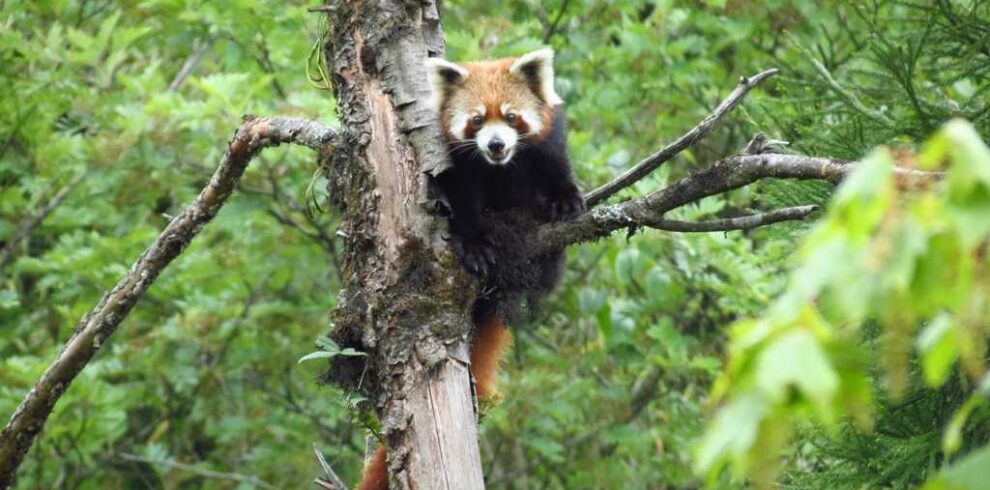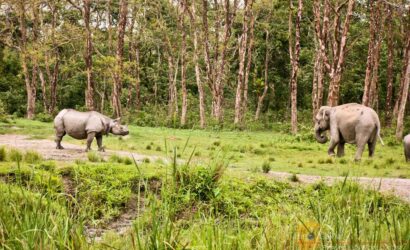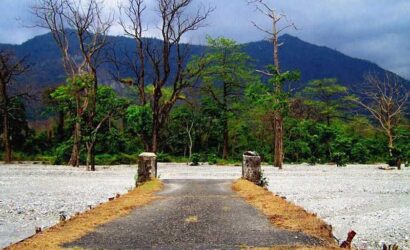Neora Valley National Park is located in the Kalimpong district of West Bengal and was founded in 1986. It is one of the richest ecological zones in eastern India, covering an area of 88 sq km. The river Neora that runs through it gave it its name.
There are still numerous parts of the park that are inaccessible because of the opulent expansion of the forest cover. For those who enjoy the outdoors and trekkers who want to explore its wilderness, this undiscovered location turns into an exciting location.
Neora Valley, widely referred to as the home of the graceful red panda, is a pure natural environment that exists unaltered in rocky terrain. It is a vital wildlife zone because of its unique flora and animals. The park is home to a vast range of fauna, including Hodgson’s Hawk Cuckoo, Jerdon’s Baza, Bay Woodpecker, Golden-throated Barbet, and many others, as well as mixed types of flora, including bamboo, oak, ferns, sal, etc.
The area is abundantly beautiful, having received heavenly blessings. There are even places where sunlight has a hard time reaching the ground due to the huge growth in certain areas. It’s a remote area made exotic by the meandering streams and beautiful green valley. You gotta stop by!
Neora Valley National Park Location
The Neora Valley National Park is located at the intersection of West Bengal, Sikkim, and Bhutan. It shares these three boundaries with forests. Additionally, it increases in height from 30 meters to 3200 meters. The highest point of Neora Valley, Rachel Danda, where these wild regions are located, reaches an incredible elevation of 10,600 feet.
One of the Eastern Himalayas’ last remaining habitats is the park. It has an amazing diversity of animals, plants, and birds, including several rare indigenous species. Tropical and temperate plants abound throughout the valley.
Flora & Fauna in Neora Valley National Park
The Neora Valley contains a variety of different plant species and is well renowned for its rhododendron vegetation and wild orchids. Subtropical Mixed Broadleaf Forest, Upper Temperate Mixed Broadleaf Forest, Lower Temperate Evergreen Forest, Wet Mixed Forest, Bak-Oak Forest, and Coniferous Forest are a few examples of the major types of forests.
The prominent plant species in this area include Rhododendron arboreum, Berberis cristata, Didymocarpus pedicellate, R. barbatum, Swertia chirata, etc. In addition to this, it contains orchids hidden in some of its more untamed regions that have yet to be explored. There are many unidentified species in this area’s thick green vegetation, which is incredibly relaxing.
Numerous creatures, including the Himalayan Tahr, Chinese Marmorata Pangolin, Black Bear, Clouded Leopard, Sloth Bear, Wild Boar, Red Panda, Golden Cat, Sambhar, Musk Deer, Goral, Barking Deer, and Himalayan Flying Squirrel, among others, can be found in the dense forest cover.
The Golden Headed Black Finch, Redstart, Brown Wood Owl, Darjeeling Woodpecker, Sunbirds, Swifts, and Parakeets can all be found in abundance there. King Cobra, Lizards, Vipers, Indian Cobras, Green Pit Vipers, Common Kraits, Blind Snakes, etc. are among the reptiles.
Neora Valley National Park Trekking
The Neora Valley National Park has established itself as a magnificent location for all trekkers. There are two entrances: Samsing and Lava. About 25 miles separate Lava from the start of the hike. The trail that leads directly into the Valley and is bordered by thick woodlands begins at the Zero point.
You start off going downhill till you come to Jaree-Butee, a flat area of land inside an oak tree forest. A campground at Alubari, which is next to the river, is located 3 kilometers away. You have to decide on an overnight camping trip.
The sights are breathtaking as you go through Samsing. The majority of trek routes begin at the five-kilometer-distance settlement of Suntaley Khola. While hiking this trail, one could see an astounding variety of plants and fauna. The park takes pride in its extraordinary biodiversity.
Rachela, also known as the untainted paradise of North Bengal, is the park’s highest peak. It is located between 9500 and 10,000 feet above sea level. You become acquainted with the park’s evergreen, deciduous, and coniferous plants during the trek up to this point. Rhododendron trees that are 300 years old have nicely decorated it. Its three borders—Bhutan, India, and Sikkim—meet at this location, which is also close to the fabled “Silk Route.”
Before beginning your trekking adventure, don’t forget to request authorization from the Forest Department. The forest office located in Lava and Samsing is where the permission can be obtained.
Best Time To Visit Neora Valley
In Neora Valley, each month of the year begs for a unique experience. The flowers bloom at their fullest in March and April, giving the flora a more vibrant appearance. The park is closed throughout the months of July through September. The best time to view mountains is from October through December. The period from December to March is a haven for bird watchers.
How To Reach
The well-known tourist attraction is about 30 kilometers from the Darjeeling railway station. You can take a taxi to the national park. Neora Valley’s closest town is Lava. Only 10 kilometres separate Lava from one of the park’s gates, which is located in the town of Kolakham. Lava is 34 km away from Kalimpong and can be reached there in an hour. From New Jalpaiguri (NJP), you can also go through Gorubathan to get to Lava. You can travel this route in 3 hours to get to Lava.
You can also choose to visit Neora Valley National Park from Samsing. Most often, trekkers who want to stay behind for camping and trekking select this route. From Samsing, it takes 3.5 hours to go to Neora Valley. Additionally, it has excellent connections to nearby cities and towns like Siliguri and Kolkata. Buses owned by the government and the private sector run frequently from these cities.




